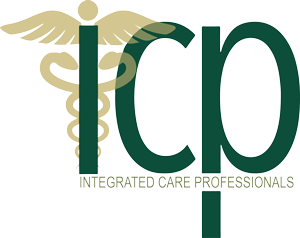Transcript
PDPM
Ayasha Thomason
Hi, I’m Ayasha Thomason.
Ashley Kirk
Hey, I’m Ashley Kirk.
Ayasha Thomason
In today’s episode of Icptv, we’re going to talk about PDPM and how our nurse practitioners can benefit your facility.
Ashley Kirk
PDPM stands for Patient Driven Payment Model, and it basically allows the home to do therapy based on patient characteristics rather than the old way, which is the rug system.
Ayasha Thomason
Right. I had been around, around for a long period of time, and it just designated therapy a certain amount of minutes and then days that they would be in rehab and then go home. Our nurse practitioners are specifically trained to know what this is and to work with the therapy teams, whereas other nurse practitioners who may be like the doctors nurse practitioner, don’t really know to work with these people on these types of issues. So, Ashley, give us a quick rundown of how our nurse practitioners help facilities in light of PDPM.
Ashley Kirk
So one of the biggest things is our nurse practitioners are there Monday through Friday, 8-5 40 hours a week, so they have the ability to collaborate with MDS nurses therapy team. Of course, the DON. All the team, basically, to be able to make sure they’re identified active diagnosis with patients coming in the door on admission.
Ayasha Thomason
Right. So let’s say a patient is going to come in. We’ve talked to the admissions coordinator. So this is what our nurse practitioners do on a daily basis. They’ll go to the admissions coordinator and say, okay, who’s on the schedule to come in for admissions this week? And so they’ll have their little list. They’ll talk to the discharge planners at the hospital, they’ll talk to the MDS nurse, they’ll talk to the therapy teams and say, okay, this patient is coming in because he had a stroke. So that doesn’t necessarily mean we’re going to just go ahead and call that patient’s diagnosis a stroke. What we have to identify is actually what’s going on with that patient. Yes, he was in the hospital because he had a stroke, but now his stroke is over and we have to deal with the things that are going on now. So gait, immobility, speech issues, aphasia, things that we need to get therapy involved in. So then that patient comes in, our nurse practitioners try to see them within 24 hours of their admission and really kind of get their medications in order, medication reconciliation, stabilization, and really identify other patient characteristics that are going on with that resident. So if they have diabetes or if they have hypertension on top of that, then we really want to highlight those. And those are things that MDS and the admissions people will put together and we’ll put that into the system. CMS kind of puts a code on all of that and shows them kind of what they’ll be reimbursed based on that patient’s stay,
Ayasha Thomason
Right. So getting those diagnoses correct and identifying them are very important and our nurse practitioners can help with that.

